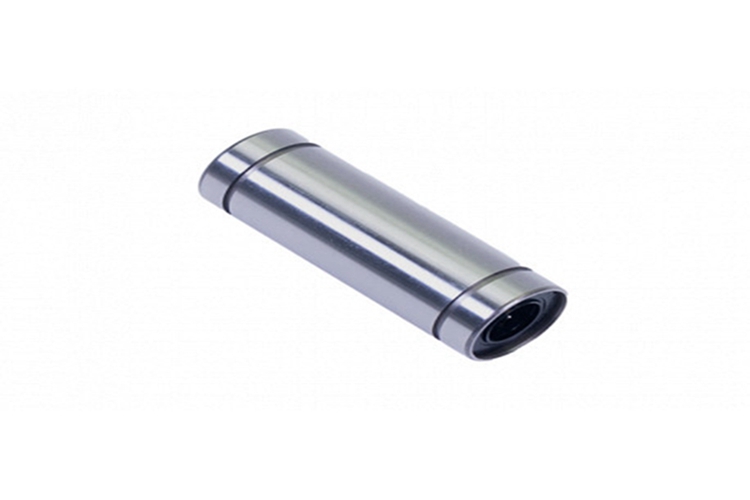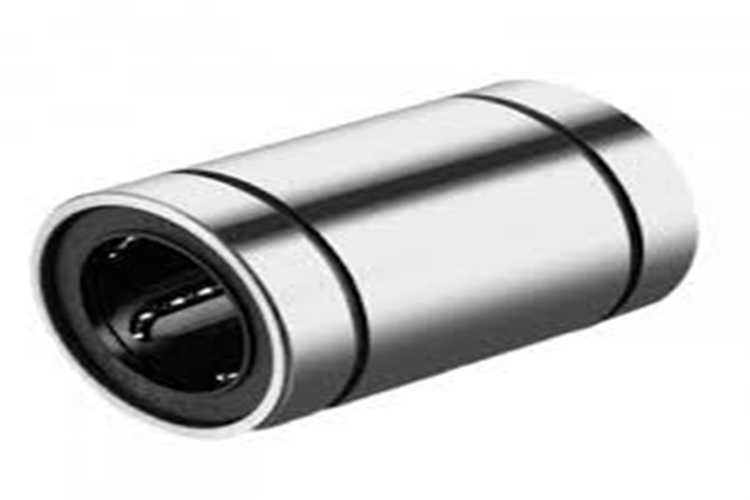In recent days, it has been more than Shanghai that has been exposed to high temperatures. Recently, the country has ushered in a wide range of high-temperature weather, in which most of southern China, Chongqing and other places have high temperatures above 35 degrees Celsius. Open the national high temperature regional forecast map of the Central Meteorological Observatory and you will see a large number of high-temperature early-warning signs in the eastern and central regions that are striking.
The high temperature pulls the electricity load quickly. The reporter learned from the State Grid Corporation of China that since the beginning of summer in June, as the temperature has risen, the operating load of the State Grid Corporation has continued to increase.
According to data from the National Electric Power Dispatch and Control Center of the State Grid, the electricity load of the State Grid reached 627 million kilowatts on July 25, and the nation’s electricity generation amounted to 16.67 billion kilowatt-hours, both hitting a record high. Since the summer of the peak season, there have been 19 provincial-level power grid load surges of 76 times in the State Grid operating area. The State Grid Corporation of China has scientifically arranged power grid operation modes, gave full play to the advantages of large power grids, and strengthened cross-provincial cross-regional power trading and orderly power management measures to ensure the balance of power supply and demand, and the power grid operation was generally stable.
Giving Priority to Protecting Household Electricity
Power shortages in some regions, and partial implementation of orderly power plans in response to load peaks
Recently, due to continued high-temperature weather, the three regional power grids in North China, East China and Central China, and the seven provincial power grids in northern Fujian, Shanghai, Jiangsu, Zhejiang, Anhui, Fujian, and Hunan all hit record highs. The power supply and demand situation in North China, East China, and Central China was once tight, and power shortages occurred in Jiangsu, Zhejiang, Sichuan, and Shaanxi provinces.
During the peak hours of electricity use, the orderly electricity use plan was implemented in some areas. Starting from July 25th, the entire province of Zhejiang launched the B-level orderly power program, avoiding the peak of 2 million kilowatts, and giving priority to guaranteeing household electricity consumption and electricity consumption for important customers. On the same day, the maximum electricity load of Jiangsu Power Grid reached 77.38 million kilowatts, and the orderly use of electricity was implemented during the day. The maximum peak load was 700,000 kilowatts. Shanghai Electric Power Grid has 1091 households listed in order to use the meter to participate in the peak of the peak, the largest peak to avoid 181,000 kilowatts.
Residents may not know the orderly use of electricity when they turn on the air conditioner and enjoy the cool weather. However, in fact, it is under the unified guidance of the government power operation authorities at all levels to focus on measures to avoid mistakes and stabilize power shortages for industrial customers, which effectively supports the daily electricity consumption of residents at high temperatures, and hospitals. Normal customers such as schools, transportation, finance, and water supply use electricity normally.
Su Shengxin, Director of Marketing Department of State Grid Corporation of China, introduced that from March onwards, State Grid Corporation of China has advanced ahead with the analysis and prediction of the supply and demand situation of Xia Power in 2013, and has continuously carried out rolling adjustments to scientifically formulate and strictly implement orderly power plans. Enterprises with high energy consumption, high emissions, and excess capacity are under the control of electricity use, and irrational demand for electricity is also reduced. Priority is given to protecting the electricity of residents. The 27 provincial-level power companies under the State Grid Corporation of China implemented a total of 660,000 customers in the orderly power scheme in 2013, with a maximum controllable load of 150 million kilowatts. Su Shengxin said: "The 660,000 households participating in the orderly use of electricity are all verified by a power supply employee. This is to effectively establish customers, determine the load, and determine the lines so as to ensure that they do not affect the electricity consumption of residents. â€
At the same time, in order to allow residents to use electricity in the heat of the summer, power supply services have also increased multiple protections such as manpower and on-duty.
In Shanghai, 8,400 office buildings and commercial customers are included in the list of ordered power plans. The power supply companies implemented customer contacts and inspection personnel one by one. It is understood that these customers' air conditioners can be reduced by about 600,000 kilowatts by halving the operation of air conditioners.
In Beijing, the 95598 power supply service hotline added 60 customer representatives to handle the peak traffic that may occur during heavy loads. The current 190 seats are running at full capacity.
In Chongqing, the power supply companies arranged on-duty personnel for the operation and maintenance of the negative control system, and were ready to implement orderly power utilization measures, repair negative control equipment, and ensure that they can “use†and “control†when it is necessary to start an orderly power scheme. under".
............
"Remote power" will be able to "nearly quench thirst"
Developing UHV is the Fundamental Way to Solve the Unbalanced Supply and Demand of Power Resources
The power is guaranteed. This year, "there is no power cut." Compared with those in the past, those who lack of power in the high temperature days, a Shanghai net friend @ Chen Ru said that the message on Sina Weibo was deeply impressed. He believes that in the financial industry, this may be related to China's economic growth has not yet fully recovered.
The reporter learned that the major areas where sustained high temperatures have recently appeared, including the Jiangsu, Zhejiang, and Shanghai areas south of the Yangtze River, Chongqing, and Beijing, where most of the local power supply is insufficient, and long-term power input has been received from outside the province (city) or even outside the region. At present, economic growth is still in an ebbing trend, and the supply and demand of electricity in these regions remains in a weakly balanced state. However, once the economy recovers, the power consumption of industrial enterprises will increase, and the “power shortage†phenomenon that has occurred in history may well be a resurgence, affecting the security of the power grid and the power supply.
The actual power gaps of State Grid Corporation's operating regions in 2008, 2010 and 2011 reached 23.51 million, 18.79 million and 27.16 million kilowatts, respectively.
In 2011, there was a serious shortage of electricity for a long time and a long period of time in the country. From the beginning of the year and continuing into the autumn, power shortages of varying degrees occurred in several provinces in East China and Central China. In Jiangsu alone, 68,000 companies have participated in the orderly use of electricity to share the responsibility for faults.
Most of these areas lack of electricity are economically developed regions, and the demand for electricity is relatively large. However, due to such factors as the environment, land, and population density, it is impossible to increase the local power supply on a large scale. Recently, some media reported that the relevant authorities will limit the approval of thermal power in the Beijing-Tianjin-Hebei region. One of the important reasons is the pleasing PM2.5. In the Yangtze River Delta region, the density of power plants has become saturated.
In April this year, the ±800 kV Xiangjiaba-Shanghai UHVDC power transmission demonstration project completed its first full-scale test of 6.4 million kilowatts, making preparations for this summer. According to data from the State Grid Corporation of China, as of July 8 this year, the cumulative amount of electricity transmitted since the project was put into operation was approximately 33,700 million kWh, becoming an important source of electricity for Shanghai's summer resort. At the same time, the ±800 kV Jinping-South Jiangsu UHV project that was formally put into operation at the end of last year could transfer 36 billion kWh of electricity each year to East China, which is equivalent to the establishment of 6 million kilowatt-class power generation at the landing site. "The factory" can effectively ease the power shortage during the summer peak season in East China.
It is understood that in the near future, the largest power-receiving power in the cross-district and inter-provincial provinces of Chongqing Power Grid has accounted for 45% of the maximum load, setting a record high. In Hunan, droughts and floods in the province have changed rapidly, with high temperatures and little rain, and the average daily electricity purchased from the Three Gorges and UHV South has reached 56 million kWh. In Zhejiang, cumulative electricity purchased from July 1 to 24 reached 6.692 billion kWh, a 41.6% increase from the previous quarter. However, the surrounding provinces and cities in these areas are also in a state of high temperature. It is not easy to temporarily purchase electricity, but temporarily there is no long-distance, large-capacity power channel. The third ultra-high voltage direct current channel (±800 kV) of Xiluodu, the left bank of the West Zhejiang-Zhejiang-West Zhejiang Power Project, which was built to send water and electricity from Sichuan, was started at the end of July last year and is currently under construction. After completion, the project will have a transmission capacity of 8 million kilowatts, which will provide important support for the power supply of Zhejiang grid.
In fact, on July 26, the maximum load in Shanghai was 28.61 million kilowatts, an increase of 10.4% over the previous year; on July 25, the maximum load in Jiangsu was 77.38 million kilowatts, an increase of 12.8% over the previous year; on July 24, the maximum load of Zhejiang was 54.63 million kilowatts. It has increased by 5.6% from last year. Recently, the State Grid Corporation of China has fully utilized the cross-regional transmission channel and sent the full-power operation of the DC channel in East China. The maximum power across the region to East China has reached more than 24 million kilowatts, an increase of more than 30% year-on-year.
Su Shengxin, director of the marketing department of the State Grid Corporation of China, stated that from the demand side, the current economic situation is sluggish, and the demand for electricity is still growing rapidly, and it may face a greater power gap in the future. To solve this problem, on the one hand, we can adopt demand side management measures, but this is only a short-term expedient measure. On the other hand, we must increase effective supply. At present, the eastern region is constrained by the environment and cannot afford a large number of new power sources. The fundamental approach is to build an ultra-high voltage power grid and realize “electricity comes from afarâ€. This has proved to be feasible, UHV projects are playing a huge role, and will bring economic, A series of benefits such as environmental protection and resource utilization efficiency increase.
According to statistics, in the past three years, the National People's Congress and the CPPCC members have submitted 128 proposals and proposals for accelerating the development of UHV at the two national conferences. At present, the State Grid Corporation of China has built three UHV AC and DC projects with the highest voltage, largest capacity, and leading technology in the world, and has always maintained safe operation. According to the plan, by 2015, 2017, and 2020, the State Grid Corporation of China will build an UHV AC with 7 vertical loops, 7 vertical loops, 13 vertical loops, 27 vertical loops, two vertical and two horizontal, three vertical and three horizontal, five vertical and five horizontal. DC engineering. On the large platform for optimizing the allocation of resources across the country, the problem of regional imbalances behind “power shortages†may be expected to be solved.
LS beariing offers many linear motion components which can be purchased online. Our frelon® lined bearings can carry 4 to 8 times the load of ball bearings. New line of stainless steel precision shafting features 1/64" x 45° chamfer at both ends. Guide blocks made of AISI 1055 steel, concentric and eccentric type guide wheels as well as new needle bearing cam followers are available for purchase in this section.
Linear Bearings
Linear motion is the most basic of all motion. Linear ball bearings provide linear movement in one direction.
A Roller Bearing, carries a load by placing rolling balls or rollers between two bearing rings called races. These bearings are comprised of an outer ring and several rows of balls retained by cages. Roller bearings are manufactured in two styles: ball slides and roller slides.
Ball Slides
Ball Bearing slides are the most common type of linear slide. They use self-lubricated ball bearings housed in the base. This arrangement offers smooth precise movement along a single-axis linear design. Typically constructed from aluminum, hardened cold rolled steel or galvanized steel, ball bearing slides consist of two linear rows of ball bearings contained by four rods located on opposite sides of the base, which support the carriage for smooth linear movement. This low-friction linear movement can be powered by a drive mechanism, by hand, or inertia. Ball bearing slides have a lower load capacity compared to other linear slides, this is because the balls are less resistant to wear and abrasions. Ball bearing slide applications include fragile instrumentation, robotics, cabinetry and appliances.
Roller Slides
Roller slides are non-motorized. Roller slides are based on linear roller bearings, which are frequently criss-crossed to provide heavier load capabilities and better movement control. They provide low-friction linear movement for hand-powered equipment. Roller slides are versatile and can be adjusted to meet numerous applications which typically include clean rooms, vacuum environments, material handling and automation machinery.
Consisting of a stationary linear base and a moving carriage, roller slides work similarly to ball slides, except that the bearings housed within the carriage are cylindrical shaped instead of ball shaped. The bearing races are "V" grooved, one being on the top carriage and the other on the base. Typically, carriages are constructed from aluminum and the rods and rollers are constructed from steel.
Although roller slides are not self-cleaning, they are suitable for environments with low levels dirt and dust. Roller slides are capable of providing linear motion on more than one axis through stackable slides and double carriages. Roller slides have a broader contact surface due to contact between the carriage and the base and resulting in less erosion.




Piston,Open Type Linear Bearing,High Precision Open Type Linear Bearing,Open Type Linear Ball Bearing,Open Type Clinker Linear Bearing
Shijiazhuang Longshu Mechanical & Electrical Equipment Trading Co., Ltd. , https://www.longsbearings.com